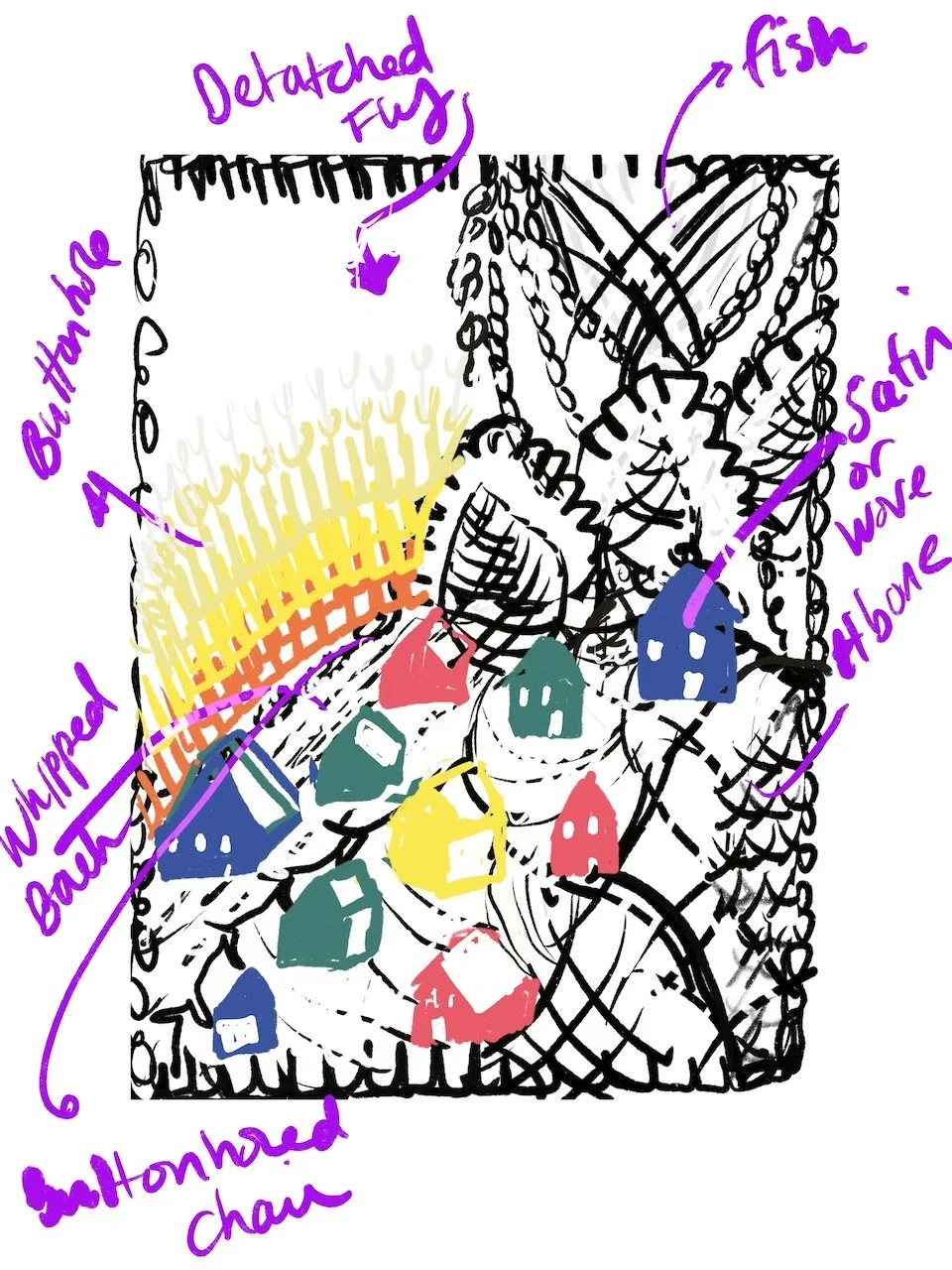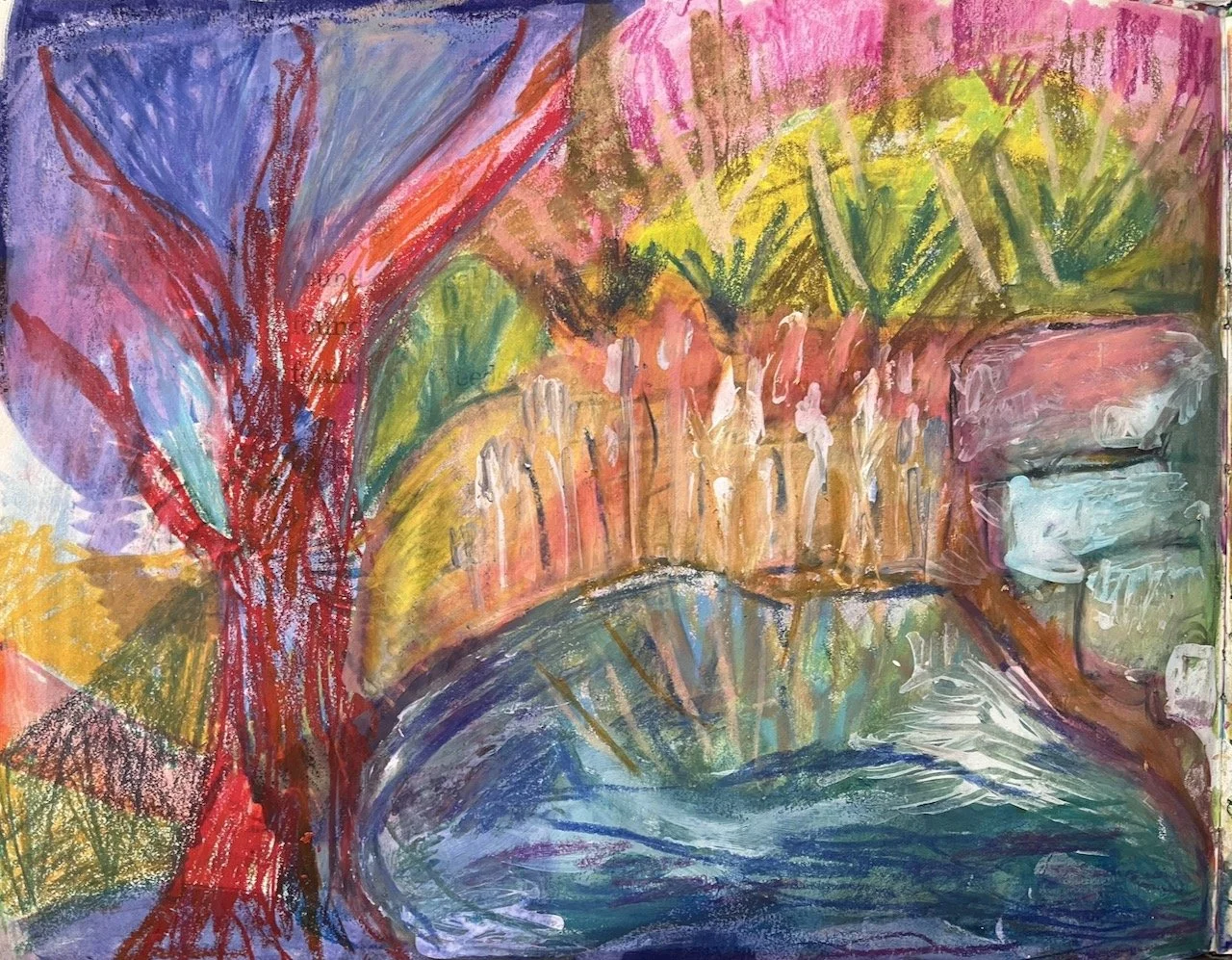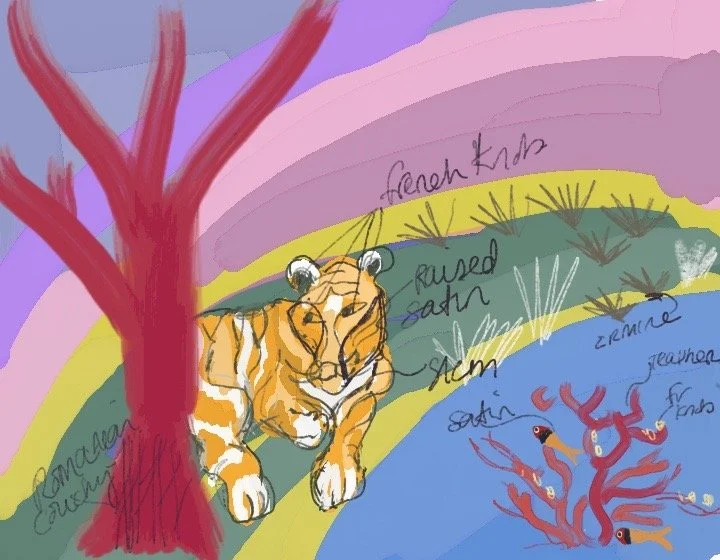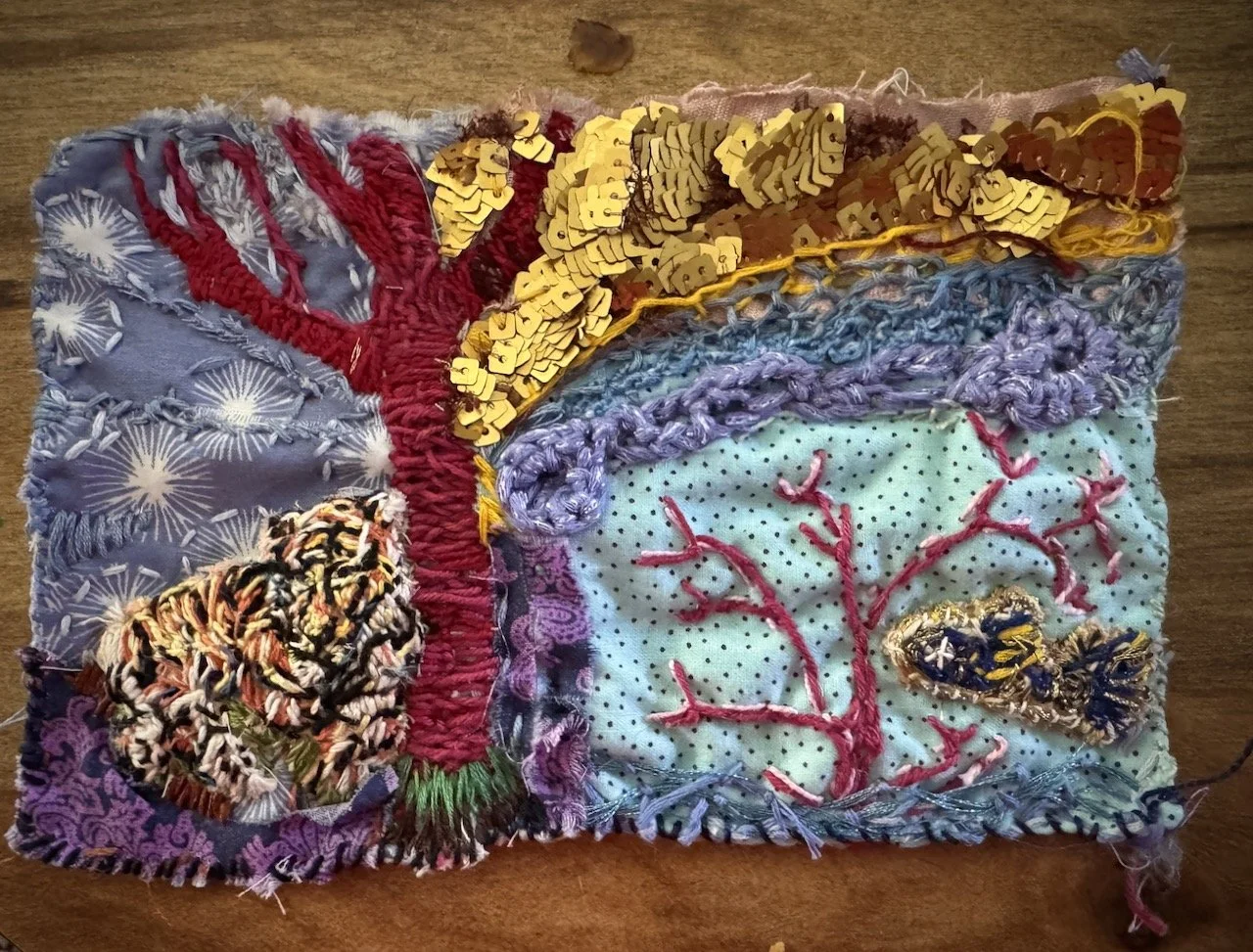Planning Ahead v. Pure Spontaneity?
Despite my improvisational leanings, the Martha Stewart side of my personality can get seduced by the idea of planning.
In February, I read The Art of Embroidery Design by Christi Johnson. It’s a great book and I recommend it. She has a great attitude about embroidery, not “clenchy” or perfectionistic at all. But, as implied by the name, she does suggest a planning process that was loose enough to intrigue me, and tenable because it was a plan that I was making for myself rather than setting up a set of speculative expectations.
It involved using Procreate to sketch a loose stitch plan on top of reference or sketch. I really liked this idea and definitely wanted to try it.
This was one of the experiments I tried for seduced by the idea of planning, and I actually used it in two of the prompts — for “Neighborhood” and “Tiger.”
For both, I used my sketchbook and art journals as as direct inspiration*, and I also sketched things out loosely in Procreate.
Experiment One: The Neighborhood
Left to right: My original art journal page, my digital sketch, the final embroidery.
For the “neighborhood” prompt, this was my process: I sketched on a layer on top of a photo of my original, and then added another layer on top of that to indicate which embroidery stitches I wanted to use. (If you aren’t familiar with layers, think of them like digital tracing paper.)
What did I learn ?
I didn’t find the process of planning unpleasant. In fact, it was fun. I like an opportunity to thoughtfully engage with my work.
The attitude I brought with me to the planning process mattered a lot— I had full permission to subtract/add/multiply/ forget the whole thing when I was stitching.
Which is sort of what happened...
…and The Embroidery Police didn’t knock down my door!
I made a basic mistake here which is probably obvious to you visually: the dimensions of my sketch were the same as my original piece, rather than the dimensions of the fabric I wanted to use. This made the composition I’d worked out in the sketch practically useless.
But even if I had used the correct dimensions in the sketch, there would have been another downfall. I was also experimenting with bringing in a dimensional embroidered technique on the houses — and I didn’t realize it would be difficult to make them as small as I’d imagined them when I did the sketch.
Doing this light bit of planning did help me to arrive at some choices that I felt good about, and that I don’t think I’d have arrived at otherwise.
For instance, when I was sketching from my original, I realized that I was particularly enjoying the black and white patterning contrasted against the brightly colored house.
Although it clearly took a different spin in the embroidered piece, I committed to that monochrome color palette in the background — an extremely atypical choice for me! And while I didn’t use the exact stitches in the places I thought I would, and I added others, the textural complexity I was envisioning did happen.
Experiment Two: The Tiger
For the next prompt, which was “tiger” I applied the lessons I learned in the “neighborhood” piece.
The planning process I used was essentially the same. The main difference was that I used several different pages from various art journals/sketchbooks rather than one. (I imported each into Procreate on its own layer.) And critically, this time I used a document of the same proportions of the fabric I planned to use!
Original art journal and sketch book pages:
Digital sketch and final piece:
What I learned:
As suspected and as is obvious: planning in the dimensions I planned to use made my compositional plan more useful!
Treating the plan I’d arrived at as a suggestion rather than an edict is also key: the tiger is on the other side of the tree, there is one fish instead of two, I added the green base to the tree etc.
Also, the energy I have when I’m planning may not be the same as when I’m executing — and that’s ok! My sketch called for bands of satin stitch in the background, which would have taken roughly forever and a day. By the time I got to stitching, perhaps a day or two later, I had ideas for other projects and wanted to move things along. So, fabric stash to the rescue! I appliqued fabric for the background and although the effect is different I am pleased with the results. N.B. I acquired the gold sequins you see here already attached to a scrap of fabric, or otherwise instead of writing this to you I’d still be applying them to this piece.
Similarly, the plan is a moment in a time and may not capture my interests at the time I’m sitting down to work. In the delta between sketching and stitching, I got interested in adding crocheted elements to my embroideries, thus the crocheted lilac bit above the “water.” I did feel a little twinge of, oh I can’t do this, it’s not in my plan — but then I realized, all rules are a fantasy when it coes to art. (And apparently everywhere else these days.)
Am I Now a Planner Ahead-er?
Overall, I’m happy with the way both of these piece turned out, I still learned a lot in the process of making them.
There is no control in the experiment but I suspect both would have looked a bit different if I had just jumped in and felt my way around. I also suspect both would have taken longer if I’d worked things out as I went.
Did I feel “clenchy” while following my plan?
Not catastrophically so, I wasn’t in misery. But it did add a frisson of tension to the experience of making.
It also did take away a bit from the sense of discovery I usually have in my work. When I’m operating without a plan, I often have a moment where it feels like the piece is such an irretrievable mess that I will no doubt have to bury it in the backyard when it’s finished.
That doesn’t feel fab, but it really does feel amazing when I figure out a solution. There were smaller moments like that in both of these pieces, but in neither did I feel the exhilaration of working without a net.
Bottom line: there are times when I need to make a plan for my visual art, and the lessons I’ve learned in these experiments will be very useful for me. There are also times that I just feel like playing with Procreate, the process of planning in itself is absorbing in its own way.
This was all good to know! And, as a matter of policy, I won’t be changing my improvisational ways any time soon.
Note: This is part of a small series reflecting on a month of embroidery experiments. . The next part looks at technical learnings.







